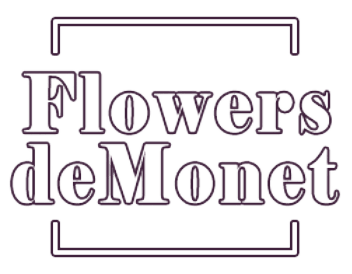Roses have captivated humanity for centuries, symbolizing love, beauty, and elegance. Among the myriad varieties, garden roses stand out as the crown jewels of the floral world. Prized for their opulent blooms, intoxicating fragrances, and timeless charm, these roses command higher prices and deeper admiration than their commercial counterparts. But what exactly are garden roses? Why do they cost more than other roses? What sets them apart, and how can sellers leverage their unique qualities? This 2,000+ word article delves into these questions, exploring their history, characteristics, colors, and strategies for successful sales.
What Are Garden Roses?
Garden roses, often called "heirloom" or "old-fashioned roses," are cultivated primarily for their aesthetic and aromatic qualities. Unlike mass-produced florist roses (e.g., hybrid teas), garden roses are bred to evoke romance, nostalgia, and natural beauty. They trace their lineage to ancient species like Rosa gallica and Rosa damascena, with modern hybrids blending vintage charm with improved resilience.
Historical Roots
Garden roses date back to the 18th and 19th centuries, when European and Asian varieties were crossbred to create lush, fragrant blooms. The Victorian era cemented their status as symbols of luxury, with cultivars like the cabbage-like Rosa × centifolia (Provence rose) adorning aristocratic gardens. Today, breeders like David Austin have revolutionized the category with "English roses," combining old-world aesthetics with repeat blooming and disease resistance.
Why Are Garden Roses More Expensive?
The premium price of garden roses reflects their labor-intensive cultivation, rarity, and superior qualities:
-
Complex Breeding and Cultivation
Creating a new garden rose variety takes years of selective breeding. Growers prioritize traits like petal count (up to 100+ per bloom), fragrance, and unique color patterns, which require meticulous cross-pollination and testing. -
Labor-Intensive Care
Garden roses are often grown in smaller batches with hand-pruning, organic pest management, and precise climate control. Their delicate petals and sprawling growth habits demand more attention than greenhouse-grown florist roses. -
Lower Yield
Commercial roses are bred for uniformity and long vase life, often at the expense of fragrance and complexity. Garden roses, however, prioritize quality over quantity, resulting in fewer blooms per plant. -
Seasonality and Perishability
Many garden roses bloom only once a year (e.g., Rosa gallica), making them seasonal luxuries. Their velvety petals are also more prone to bruising during transport, increasing handling costs. -
Exclusivity
Rare varieties like the ‘Juliet’ or ‘Peace’ rose are patented, limiting propagation rights and driving up prices. Limited-edition hybrids can cost10–20 per stem wholesale, compared to
1–3 for standard roses.
Garden Roses vs. Other Roses: Key Differences
Understanding what sets garden roses apart helps sellers highlight their value:
| Feature | Garden Roses | Commercial/Florist Roses |
|---|---|---|
| Bloom Structure | Lush, multi-petaled, rosette-shaped | Sleek, fewer petals, pointed buds |
| Fragrance | Rich, complex scents (citrus, myrrh, etc.) | Often mild or absent |
| Growth Habit | Bushy, sprawling, ideal for gardens | Tall, straight stems for cutting |
| Durability | Shorter vase life (3–5 days) | Longer vase life (7–10 days) |
| Use Cases | Weddings, perfumes, ornamental gardens | Everyday bouquets, events |
The Kaleidoscope of Garden Rose Colors
White: ‘Madame Hardy’ (green-tinged centers) and ‘Iceberg’ (pure white).
Pink: ‘Queen of Sweden’ (soft apricot-pink) and ‘Gertrude Jekyll’ (deep rose).
Romantic Pastels
Peach: ‘Juliet’ (apricot-blush) and ‘Eden Rose’ (cream-pink edges).
Lavender: ‘Blue Moon’ (silvery lilac) and ‘Neptune’ (mauve).
Dramatic Shades
Crimson: ‘Black Baccara’ (near-black red) and ‘Munstead Wood’ (deep plum).
Bi-Colors: ‘Scentimental’ (red-white stripes) and ‘Tequila Sunrise’ (yellow-orange ombré).
Vintage Tones
Antique Blush: ‘Cécile Brünner’ (pale pink) and ‘The Alnwick Rose’ (old rose pink).
Marketing Garden Roses: Strategies for Success
To capitalize on their premium status, sellers must emphasize their unique selling points (USPs):
1. Target Luxury Markets
Weddings and Events: Partner with wedding planners to showcase garden roses in bridal bouquets and centerpieces. Highlight varieties like ‘David Austin’s Patience’ (ivory) for timeless elegance.
High-End Florists: Supply bespoke arrangements for clients seeking exclusivity.
2. Educate Consumers
Share the story behind each rose (e.g., ‘Peace’ roses’ WWII heritage).
Explain care tips: Trim stems underwater, use floral preservatives, and avoid direct sunlight.
3. Leverage Visual Appeal
Use high-quality photography to showcase their lush textures and gradients.
Create DIY kits for gardeners, including bare-root plants and planting guides.
4. Highlight Fragrance
Market garden roses as natural air fresheners or ingredients in perfumes and candles.
5. Offer Seasonal Collections
Launch limited-edition bouquets during peak seasons (spring, Valentine’s Day).
6. Sustainability Angle
Promote organic growing practices and heirloom preservation to eco-conscious buyers.
Conclusion: The Timeless Allure of Garden Roses
Garden roses are more than flowers—they are works of art, steeped in history and crafted with passion. Their higher cost reflects unmatched beauty, fragrance, and craftsmanship, appealing to discerning buyers seeking luxury and authenticity. By emphasizing their unique qualities and storytelling potential, sellers can cultivate a thriving market for these botanical treasures. Whether adorning a wedding aisle or a backyard garden, garden roses continue to enchant, proving that true beauty is always in bloom.

